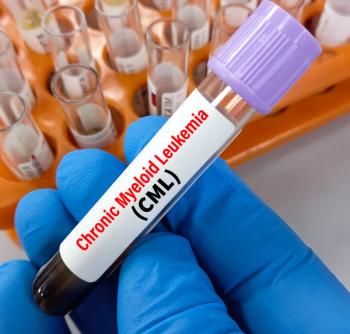
- 2017 Asembia Recap
- Volume 8
- Issue 4
Asembia Summit Illustrates Growth in Specialty Pharmacy
Summit provides comprehensive mix of content and education, including clinical, financial, supply chain, and industry trends.Â
The largest US health care conference focused on specialty pharmacy, Asembia’s 2017 Specialty Pharmacy Summit, was a great opportunity to engage with many of the more than 5000 stakeholders that play in the specialty pharmacy industry.
The 4-day conference featured a variety of educational sessions, business seminars, networking and social events, an exhibit hall, and an opportunity to meet 1-on-1 with the movers and shakers of specialty pharmacy. There was an excellent mix of content in the educational sessions, including topics focused on clinical, financial, supply chain, and industry trends.
During the opening featured session, it was enlightening to hear Adam Fein, PhD, of Drug Channels, Eric Percher of Barclays, and Doug Long of QuintilesIMS sharing their perspectives on past, present, and future specialty pharmacy industry trends, including analysis and outlook on the changing aspects of specialty pharmacy, as well as important data on market dynamics. Dr Fein talked about how “specialty pharmacy is growing up.”
His predictions included:
• Pharmacy benefit managers (PBMs), pharmacies, wholesalers, health plans, and providers will battle for control of the specialty market and the patient journey, manufacturers’ specialty networks will become larger and more inclusive.
• Channel control will continue migrating from manufacturers to PBMs and payers, co-evolving economics will consolidate specialty pharmacies, and organized channels—new ownership and partnering relationships—will emerge. 
A statistic shared by Long painted the picture on why we are all in the specialty pharmacy business and meeting together in Vegas: Specialty pharmacy is one of the fastest growing segments in health care and is projected to exceed $300 billion in annual spend by 2021, up from $180 billion in 2016.
Long mentioned that it is no secret that over the next few years, the pharmacy industry’s revenues will continue to shift from traditional medications to specialty medications. To account for this, the industry is seeing tremendous growth in the number of specialty pharmacies in existence, especially those operated by a health system.
According to Drug Channels’ 2017 Economic Report on U.S. Pharmacies and Pharmacy Benefit Managers, pharmacy locations owned by health care providers are the fastest-growing segment of accredited specialty pharmacies. Subsequently, there was a much larger presence of health systems and topics related to health systems at this year’s Asembia summit compared with previous years.
At the summit, EMD Serono released its latest Specialty Digest, which reported that 50% of health plans use a single specialty pharmacy provider. This statistic got us thinking, and I’m sure many other attendees thinking, “If half of the health plans are not using health system pharmacies and instead choosing a single specialty pharmacy provider due to cost, how will health system-owned specialty pharmacies gain access to limited specialty pharmacy dispensing networks as defined by the manufacturer?”
The topic of biosimilars was discussed again this year in many sessions. Percher said during his presentation that PBMs are seeking to drive biosimilars to decrease costs. Additionally, distributors and payers are developing biosimilar strategies that impact the medical benefit. Interesting to note is the lack of interchangeability of biosimilars.
The FDA recently published a draft guidance document on the concept of interchangeability. While there have been 5 biosimilar products approved by the FDA, none of the approved products are interchangeable with the innovator, meaning that the prescription must be written for the biosimilar for the biosimilar to be dispensed. Europe has been more accepting of biosimilar medications, which have increased their patient access.
It will be interesting to see where the United States trends in the next couple of years. Another recurring theme throughout the summit focused on the importance of data reporting and sharing among specialty pharmacy stakeholders. There were several health care technology companies in attendance discussing the variety of services available to help specialty pharmacies meet the industry’s data reporting needs.
Aside from the industry takeaways, it was consistently made clear what the focus of specialty pharmacy is all about. It is getting the right medications to patients with complex conditions and helping these patients and their caregivers, families, and friends on their journeys to best manage their condition.
With that said, it was such an inspiration to hear the story of Emmy Award-winning talk show host Leeza Gibbons and her caregiving experience after her mother was diagnosed with Alzheimer’s disease. Gibbons created a foundation that focuses on caregiver support and fulfilled a promise to her mom that she would share her story.
The goal of the program is to prepare caregivers for an ever-changing life by providing innovative self-care and wellness programs and resources. Her message really resonated because we interact with caregivers every day in specialty pharmacy.
Caregivers are frequently the only conduit between the patient and the specialty pharmacy, so ensuring we are successfully engaging caregivers is essential to providing the best possible care for our patients. The Walgreens local specialty pharmacy model is all about that personal connection our specialty pharmacists have with patients.
As it is every year, Asembia’s 2017 Specialty Pharmacy Summit was educational, inspirational and aspirational. We look forward to attending the Summit in 2018. 
Articles in this issue
over 8 years ago
Specialty Drugs Pose Additional Challenges to Employersover 8 years ago
Treating Rare Diseases Comes With Different Set of Challengesover 8 years ago
Asembia 2017: A Look Back and a Peek Aheadover 8 years ago
The Growing Need for Specialty Curriculum in Pharmacy Schoolsover 8 years ago
Inaugural Patient Choice Awardsâ„¢ Winners Honored at Asembiaover 8 years ago
The Need for Standards in Specialty Pharmacy DataNewsletter
Stay informed on drug updates, treatment guidelines, and pharmacy practice trends—subscribe to Pharmacy Times for weekly clinical insights.























































































































































































































